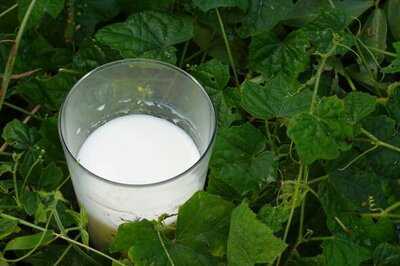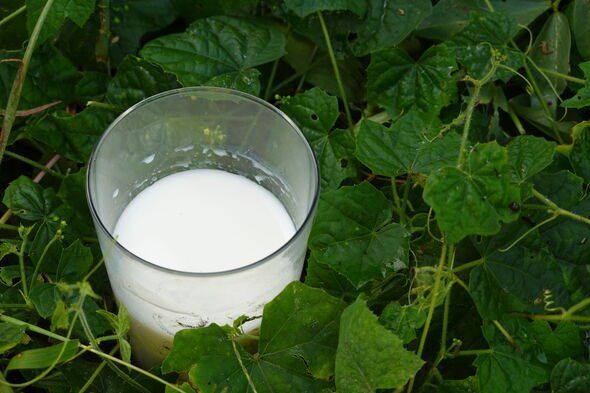
It's a mainstay of every fridge in the UK, being a go-to for tea, coffee and many breakfast options like cereal, porridge or scrambled eggs. But sometimes despite your best efforts, you won't always manage to finish the six-pinter of semi skimmed off before it goes funny.
But according to experts at Scottish Water, you should never pour leftover or gone off milk down the sink. That's because it can cause serious problems for your drains, blocks pipes and is bad for the environment.
Instead, households are being told they should use spare milk on the garden - even if it's gone off.
Household advice website The Spruce says that milk is a great natural fertiliser for gardens and also boasts anti-fungal properties which fights certain infections which can blight plants.

Blight is a common problem in the late summer and early autumn months. In October, blight is regularly found on potato and tomato plants, as is powdery mildew, but milk can help prevent these diseases on your plants.
The Spruce reports: "The calcium helps the plants grow, as well as prevent blossom end rot, which can be caused by a calcium deficiency. This condition is common in tomato, peppers, and squash plants.
"Milk's antifungal properties are well researched within the scientific community, with successful outcomes in treating powdery mildew, a fungal condition which impacts many economically important crops such as grapes.
"Any type of milk, including fresh, expired, evaporated, and powdered, can be used in a garden as long as it's diluted properly. Stick with reduced-fat [semi-skimmed] or low-fat (skimmed) milk, rather than whole options."
It adds: "Mix the milk with water in a 50-50 ratio and pour it into a spray bottle. Watering down the milk is essential to ensure it actually benefits your garden, rather than destroying the plants. The ratio doesn't have to be exact - in fact, you can even just mix up the very last dregs as you finish off the jug, using just a quarter-cup or so of milk."
It says that the milk should be applied to the leaves, or directly poured into the soil. After about half an hour, check the milk has been absorbed and wipe off any excess with a wet cloth.
Tomatoes can actually develop fungal problems if the milk is left sitting on leaves, so make sure the excess is removed.
After you use milk, don't use a chemical product on the leaves as this will kill the bacteria in the milk that helps boost the plants, it adds.
-
US company defies Trump's tariffs, will invest $1 billion in India.

-
Instructions to cancel Xbox Game Pass and change your subscription on console, desktop and mobile

-
Toll Tax Update - Pay via UPI if you don't have a Fastag, you won't be charged double.

-
Reece James injury update after Chelsea captain withdraws from England squad

-
Rachel Reeves on brink as Budget goes up in smoke - everything's 'on fire!'
